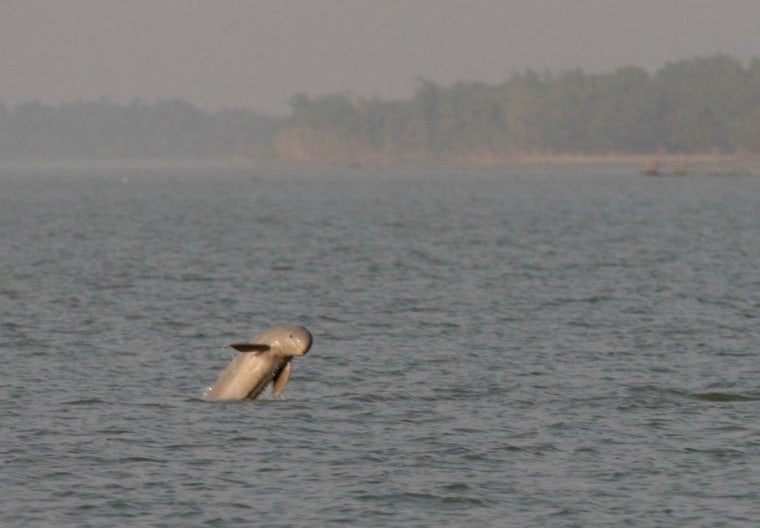Thousands of rare Irrawaddy dolphins have been found in Bangladeshi waters, a wildlife advocacy group said Wednesday, a hopeful sign for a vulnerable species found only in small numbers elsewhere.
However, the newly discovered population is already threatened by climate change and fishing nets, the New York-based Wildlife Conservation Society said.
Nearly 6,000 Irrawaddy dolphins, which are related to orcas or killer whales, were found living in freshwater regions of Bangladesh's Sundarbans mangrove forest and the adjacent waters of the Bay of Bengal, the Wildlife Conservation Society announced.
Prior to this study the largest known populations of Irrawaddy dolphins numbered in the low hundreds or less, a news release from the group said.
"This discovery gives us great hope that there is a future for Irrawaddy dolphins," said Brian D. Smith, the study's lead author. "Bangladesh clearly serves as an important sanctuary for Irrawaddy dolphins, and conservation in this region should be a top priority."
The Irrawaddy dolphin grows to up to 8 feet (2.5 meters) in length and frequents large rivers, estuaries, and freshwater lagoons in south and southeast Asia.
Scientists do not know exactly how many Irrawaddy dolphins remain. In 2008, they were listed as vulnerable in the International Union of Conservation of Nature's Red List based on population declines in known populations, according to the news release.
The results of the study were made public Wednesday at the First International Conference on Marine Mammal Protected Areas in Maui, Hawaii. Bangladeshi researchers in the team said the study was launched in 2004.
Ainun Nishat, the Bangladesh head of International Union for Conservation of Nature, said the finding was an indication that "ecology in the area is not dead yet."
"There is plenty of food, mainly fish, in the area for the dolphins to eat," said Nishat, who was not involved in the study. "What is now needed is to restrict fishing in the area to protect the dolphins."
During the study, researchers encountered two dolphins that had become entangled and subsequently drowned in fishing nets — a common occurrence, according to local fishermen.
Rising sea levels caused by climate change also threaten the freshwater dolphins, the researchers said.
Wildlife Conservation Society has asked Bangladeshi authorities to establish a sanctuary for the dolphins in the Sundarbans mangrove forest.
"The sanctuary may take time," said Mohammad Jalilur Rahman, an official at the state-run Bangladesh Fisheries Research Institute. "But we are already motivating the fishermen not to harm the dolphins which get entangled in their nets."
